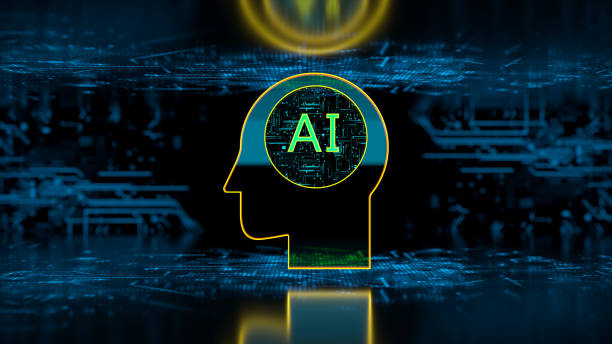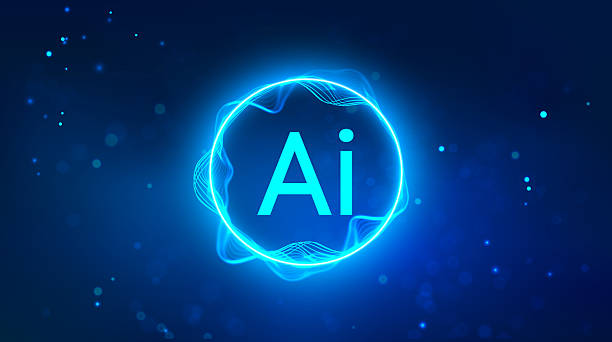Introduction and Overview of AI Assistant: A Smart Companion
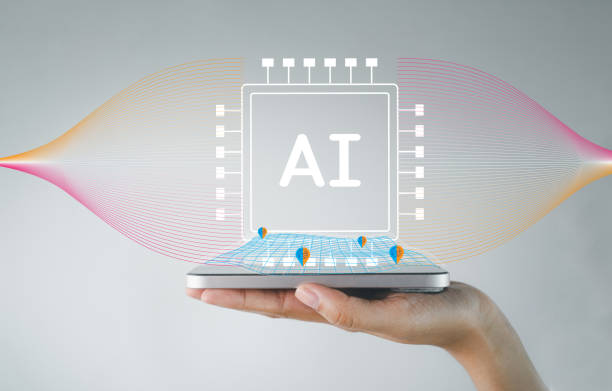
In today’s world, which is progressing at a dizzying pace of technology, the concept of an AI assistant has played an increasing role in our lives. An AI assistant is software that uses Natural Language Processing (NLP) and Machine Learning (ML) to perform tasks or answer questions.
This technology is no longer limited to science fiction movies; it has a strong presence in our smartphones, smart homes, and even our cars.
The main goal of designing this smart assistant is to simplify human interaction with technology and provide automated services.
From answering general questions to managing daily schedules and even controlling smart devices, AI assistants are changing the way we live and work.
The history of this technology’s development goes back decades, to when researchers first sought to build machines that could think and learn like humans.
But with recent advancements in computational power and access to massive data, AI assistant capabilities have reached an unprecedented level. These assistants can identify patterns by collecting and analyzing data, and make decisions or offer suggestions based on them.
This #transformative_technology is creating a #digital_revolution that impacts all aspects of our lives and shapes the #smart_future.
Imagine a personal AI assistant that not only responds to your commands but anticipates your needs before you even voice them and offers solutions.
These capabilities demonstrate the immense potential of AI assistants, which are currently proving more efficient than traditional human assistants in many aspects.
This transformation is evident not only at an individual level but also on a larger scale; various industries are optimizing processes, reducing costs, and increasing productivity by utilizing these assistants.
The emergence of AI assistants is not just a technological advancement; it’s a paradigm shift in how we interact with the world.
Are you bothered by losing customers who visited your site to make a purchase?
Rasaweb is your specialized solution for having a successful online store.
✅ Significant increase in your online sales
✅ Building trust and professional branding with customers⚡ Get free consultation from Rasaweb experts!
Applications of AI Assistant in Daily Life: Smart Facilitator
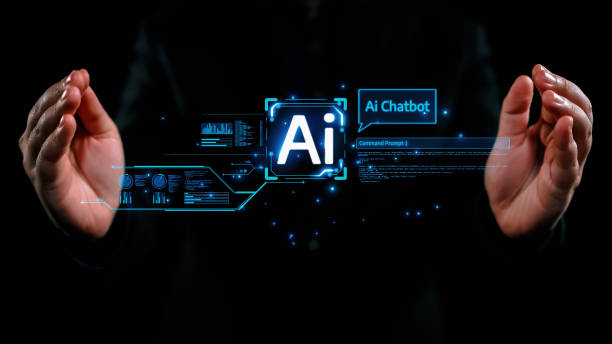
The AI assistant is no longer a luxury item; it has become an indispensable part of many people’s daily lives.
These intelligent systems are with us from early morning until late at night to simplify our tasks and provide a better user experience.
One of the most common applications of AI assistants is in smart homes.
Users can adjust home lighting, control thermostats, lock doors, or even turn on coffee makers with voice commands.
This level of convenience and automation has made life much easier for residents.
Also, voice assistants like Siri, Alexa, and Google Assistant have become primary sources of information; from answering general questions and facts to providing weather forecasts and exchange rates.
These capabilities allow users to quickly access needed information without typing or searching the internet.
In entertainment, an AI assistant can play music, manage podcasts, or even read bedtime stories for children.
These entertaining features enrich leisure time and make the home environment more pleasant.
Managing daily schedules and reminders is another vital function of these assistants.
They can schedule meetings, set reminders for important tasks, and even predict traffic routes and suggest the best departure times.
For busy and hardworking individuals, these assistants act as virtual personal secretaries who significantly help organize their lives.
Furthermore, in the health and wellness domain, some AI assistants can help track physical activities, remind about medication intake, and even provide simple medical advice.
Of course, these do not replace professional medical advice but can serve as useful auxiliary tools.
Finally, the AI assistant’s ability to learn from user habits and preferences allows them to provide more personalized and accurate services, which in turn elevates the user experience to higher levels and transforms them into reliable companions in our daily lives.
AI Assistant in the Workplace and Businesses: Increasing Productivity

In the modern business environment, the AI assistant has become a powerful tool for increasing productivity, reducing costs, and improving customer service. The applications of this technology in organizations are very broad and diverse.
One of the most important areas is the automation of repetitive and time-consuming processes.
AI assistants can automatically categorize emails, prepare initial reports, collect and analyze data from various sources, or even perform simple accounting tasks.
This automation allows employees to focus on more valuable and strategic tasks.
In customer service, AI-powered chatbots and voice assistants are the front line for answering frequently asked customer questions.
They can answer questions 24/7, troubleshoot problems, and even manage transactions.
This not only increases customer satisfaction but also lightens the workload of human support teams and significantly reduces costs.
Data analysis is another strength of an advanced AI assistant.
These assistants can process vast amounts of sales, marketing, financial, and operational data and identify hidden patterns and trends.
These data-driven insights help managers make more informed decisions and optimize their business strategies.
Furthermore, in human resources, AI assistants play a role in recruitment and candidate selection processes, answering employee questions about leave or benefits, and even employee training and development.
They can screen resumes, conduct initial interviews, and even suggest personalized training programs.
In specialized industries such as medicine and law, AI assistants act as research tools, helping doctors diagnose diseases or lawyers find relevant case precedents.
These advancements not only increase accuracy but also significantly reduce the time required to perform complex tasks.
AI assistant technology is rapidly evolving, with new capabilities added daily that have the potential for fundamental changes in the workplace.
Table 1: Comparison of AI Assistants by Business Application
| Assistant / Platform Name | Key Capabilities | Target Industries | Main Business Benefits |
|---|---|---|---|
| IBM Watson Assistant | Advanced chatbot, unstructured data analysis, complex question answering | Financial services, healthcare, customer service | Increased customer satisfaction, support automation, deep analysis |
| Salesforce Einstein | Sales forecasting, personalized CRM recommendations, customer behavior analysis | Sales, marketing, customer service | Improved sales processes, increased conversion rates, customer experience customization |
| Microsoft Azure Bot Service | Custom chatbot building, integration with Microsoft services, multi-language support | All industries (general solutions) | High flexibility, scalability, reduced development costs |
| Google Dialogflow | Building conversational user interfaces, user intent detection, integration with various platforms | E-commerce, customer service, IoT | Ease of development, strong natural language understanding, multi-platform |
| Amazon Lex | Building conversational voice and text interfaces, using Alexa technology | Customer service, telephony, IVR | Integration with AWS ecosystem, rich voice user experience |
Challenges and Ethical Considerations in Using AI Assistants: Questionable Content
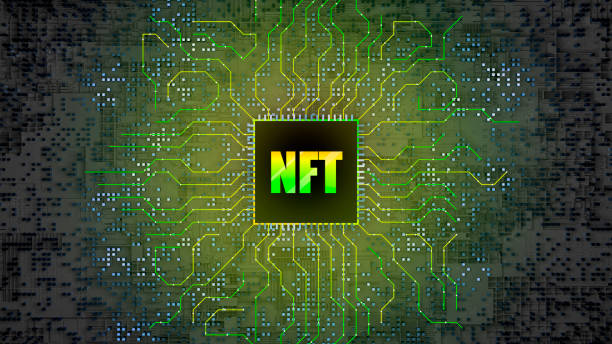
Despite all its unparalleled advantages and potentials, the widespread use of AI assistants comes with significant challenges and ethical considerations that require serious attention.
One of the biggest concerns is data privacy and information security.
For proper functioning, AI assistants require access to vast amounts of user personal data.
This data can include conversations, locations, purchasing habits, and even health information.
Storing and processing this volume of sensitive information increases the risk of privacy breaches and data misuse.
Therefore, developers and users must pay special attention to security protocols and privacy policies.
Another challenge is bias in algorithms.
Since AI assistants are trained on data collected by humans, if this data contains racial, gender, or cultural biases, the assistant will also reflect these biases, potentially leading to discrimination or unfair decisions.
This issue is particularly critical in areas such as employment, lending, or judicial systems where AI assistants play a role, and it can have serious social consequences.
The discussion of job displacement is also another major concern.
With the increasing ability of an AI assistant to automate tasks, there is a concern that a significant portion of human jobs, especially repetitive or rule-based ones, will be eliminated.
Although AI can also create new jobs, the speed and scale of these changes require social and economic planning for workforce retraining and the establishment of support networks.
Accountability and transparency are also important ethical considerations.
When an AI assistant makes a wrong decision or unintentionally causes harm, who is responsible? Is the developer, the user, or the AI system itself responsible? These questions require clear legal and ethical frameworks to prevent ambiguity.
Finally, over-reliance on these assistants can also lead to a reduction in human cognitive and analytical skills.
Understanding these challenges and working to find appropriate solutions is crucial to ensure that AI assistant technology develops in a responsible and beneficial way for society.
Are we ready to fully embrace these changes? This is a question society must answer.
Are your e-commerce site visitors leaving before purchasing? Don’t worry anymore! With Rasaweb’s professional e-commerce website design services, solve the problem of not converting visitors into customers forever!
✅ Significant increase in conversion rates and sales
✅ Unparalleled and attractive user experience⚡ Contact us now for a free consultation!
Different Types of AI Assistants and Their Differences: An Educational Guide
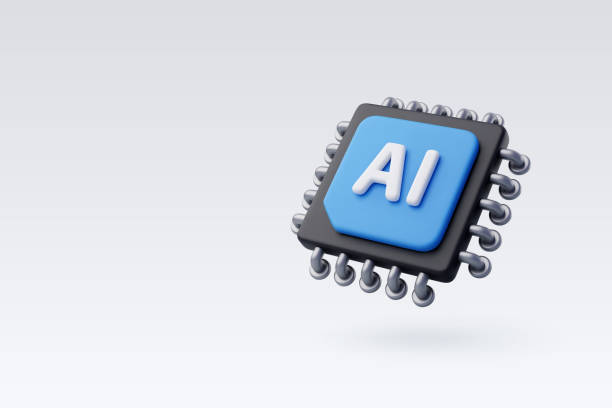
The world of AI assistants extends beyond a few well-known names like Siri or Alexa. These assistants exist in various types and forms, each with different features and applications based on their underlying goals and technologies.
Understanding these differences is essential for optimal selection and use.
One of the most important classifications is the difference between rule-based assistants and assistants based on Machine Learning (ML) or Deep Learning.
Rule-based assistants use a set of predefined rules to answer questions or perform tasks.
They perform very well in specific and structured tasks but have poor performance when faced with unforeseen circumstances or complex questions.
In contrast, ML-based assistants learn from data and can recognize patterns, answer ambiguous questions, and even manage more complex conversations.
This category of assistants has the ability to adapt and continuously improve.
Another classification is based on the user interface: voice assistants and text assistants.
Voice assistants like Google Assistant or Alexa primarily interact with users via voice commands and are common in devices such as smart speakers or phones.
Text assistants or chatbots communicate with users through text messages on websites, messaging applications, or customer support platforms.
Some more advanced assistants offer a combination of both modes.
Assistants can also be categorized based on their application domain: general-purpose assistants and specialized assistants.
General-purpose assistants, such as companion assistants in smartphones, are capable of performing a wide range of tasks, from web searching to setting alarms.
In contrast, specialized assistants are designed to perform specific tasks in a particular domain, for example, medical assistants for aiding disease diagnosis, financial assistants for managing investments, or legal assistants for legal research.
These specialized assistants typically possess deeper knowledge in their respective fields.
AI assistant technology continues to advance, and we are witnessing the emergence of assistants that not only respond to commands but are also predictive and proactive, meaning they anticipate and provide solutions for user needs before they are even stated.
Understanding these distinctions helps users choose an assistant that best matches their specific needs and fully utilize the potential of AI assistants.
The Future of AI Assistants and Predictions: Analytical and News-driven
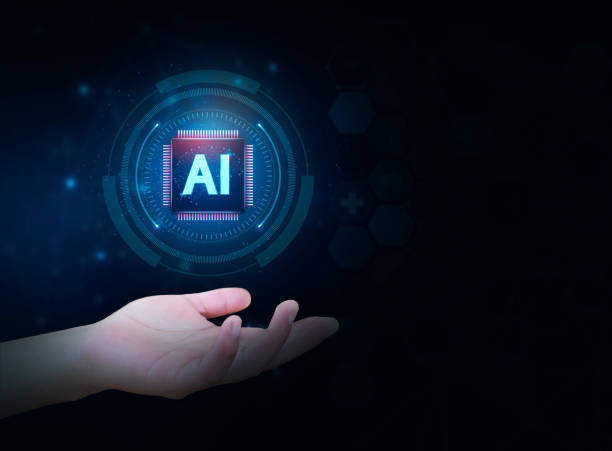
The future of AI assistants promises tremendous and exciting developments that will go beyond their current capabilities.
It is predicted that AI assistants in the future will not only become smarter and more efficient but will also become an indispensable and fully integrated part of our daily lives, to the extent that we won’t even notice their presence.
One of the main trends is the move towards proactive and predictive assistants.
Instead of waiting for our commands, future assistants will be able to anticipate our needs by continuously analyzing data and learning from our behavioral patterns.
For example, an AI assistant might suggest an alternative route before you even think about traffic, or update your shopping list before you run out of milk in the fridge.
Integration with new technologies such as Augmented Reality (AR) and Virtual Reality (VR) will add a new dimension to interacting with AI assistants.
Imagine an assistant that visually displays real-world information before your eyes or guides you through complex tasks in a virtual environment.
These developments will revolutionize how we learn, work, and entertain ourselves.
Furthermore, AI assistants are expected to gain a deeper understanding of human emotions and intentions. With advancements in Natural Language Processing and sentiment analysis, assistants can communicate with us in a more empathetic and natural way, leading to more efficient and satisfying interactions.
This capability can be very useful in areas such as mental health or elder care.
In the business sector, AI assistants will play a more key role in strategic decision-making, risk management, and innovation. These assistants can identify new opportunities by analyzing market trends and big data, helping managers make critical decisions.
Finally, the discussion of standardization and interoperability between different assistants and platforms is also of great importance.
The goal is for an AI assistant to be able to cooperate with other systems and devices without any limitations and create an integrated smart ecosystem.
This vision depicts a future where the AI assistant will be not just a tool, but a constant collaborator and companion for humans.
How to Choose and Optimize an AI Assistant for Your Needs: Expert Guidance
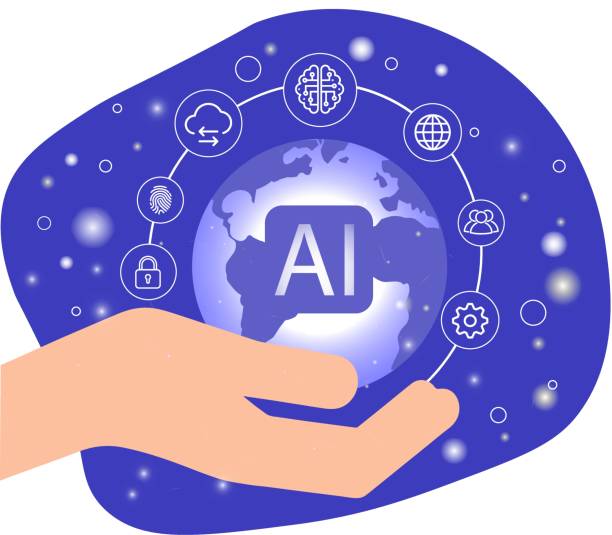
Choosing the right AI assistant and optimizing it for your personal or business needs is a crucial step to fully leverage the potential of this technology.
Given the increasing variety of assistants available in the market, understanding the key factors for an informed choice is essential.
The first step is accurately identifying your needs and goals. Are you looking for an assistant to manage your smart home? Or a tool to increase productivity in the workplace? Perhaps you need an assistant to help with learning and education.
The clearer your goals, the better your choice will be.
After that, you should compare the key capabilities and features of various assistants. Does the assistant support your language? Does it have the ability to connect to the devices and services you use? (such as calendar, email, Customer Relationship Management CRM systems).
Accuracy in speech recognition, natural language processing capability, and learning and personalization capabilities are among the important features.
Data privacy and security issues are also of high importance.
Check what policies the assistant’s developing company has regarding the collection, storage, and use of your data.
Is the data encrypted? Is it possible to delete data? Ensuring the security of your personal information should be a priority.
Ecosystem and integration are also important factors.
If you use products from a specific brand (such as Apple, Google, or Amazon), the AI assistant from that same ecosystem might be the best option because it will have greater integration capabilities with your devices and services.
To optimize your AI assistant, first familiarize yourself with its basic commands and features.
Many assistants have a specific list of commands you can use.
Then, through regular use, allow the assistant to learn from your habits and preferences.
The more you use it, the more personalized performance it will provide.
Calibrating privacy settings, enabling or disabling specific features, and also providing feedback to developers can help improve your experience.
Regularly updating the assistant’s software is also crucial to benefit from the latest features and security improvements.
Ultimately, choosing the right AI assistant and optimizing it is an ongoing process that evolves with needs and technological advancements.
Table 2: AI Assistant Selection Checklist
| Criterion | Points to Consider | Importance (Low/Medium/High) |
|---|---|---|
| Defining Needs | Main applications (personal, work, educational, entertainment)? What tasks should it perform? | High |
| Capabilities and Features | Speech recognition accuracy, language support, integration with other apps/services, personalization | High |
| Ecosystem Compatibility | Compatibility with existing devices (phone, smart speaker, home appliances) and operating systems | Medium to High |
| Privacy and Security | Data collection policies, encryption, user control over data, company’s security track record | High |
| Learning and Adaptation Capability | Does the assistant learn from your interactions? Does it perform better over time? | Medium |
| Cost | Initial device purchase costs, monthly/annual subscriptions, in-app purchases | Medium |
| Support and Updates | Does the company regularly provide updates and technical support? | Medium |
| User Reviews and Ratings | Reviewing other users’ and experts’ experiences regarding performance and features | Medium |
Training and Skill Development for Working with AI Assistants: Increasing Productivity
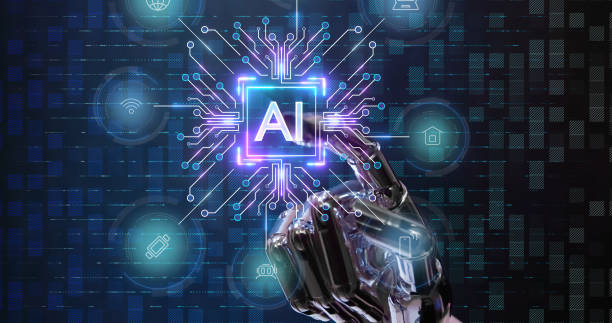
Simply having a powerful AI assistant is not enough; to fully leverage its potential, users also need to develop the necessary skills for effective interaction with it.
Educating oneself and others on how to optimally use these assistants can make a significant difference in increasing productivity and improving user experience.
The first step is a complete familiarity with the basic commands and capabilities of your assistant.
Many users only utilize a small fraction of their assistant’s capabilities.
Take the time to read the user manual or command list.
Manufacturers’ websites typically provide comprehensive and complete training resources.
For example, learn how to formulate more complex requests, not just “What’s the weather?” but “What’s the weather like in Tehran for the weekend, and is it suitable for a walk?”.
Training the assistant in natural language is also an important part of this process.
Although AI assistants have made significant progress in understanding natural language, there are still differences in how people express themselves.
By using clear and concise sentences and repeating commands with different formulations, you help the assistant become familiar with your accent, speech rate, and speaking style.
This mutual learning will gradually lead to more natural and accurate interactions.
In the field of prompt engineering, which is essentially the art of designing optimal questions and commands for AI systems, users can significantly increase their assistant’s efficiency by learning the basics.
For example, for text-based assistants like ChatGPT, learning how to construct precise and specific prompts, including context, expected output format, and any limitations, can yield much better results.
Also, experimentation and trying out are an integral part of this process.
Try assigning new tasks to the assistant, play with different settings, and see how the assistant responds.
The more you experiment, the more familiar you will become with its capabilities and limitations.
Participating in online communities and specialized forums can also be very beneficial.
In these communities, you can learn from others’ experiences, get guidance, and even discover new tips and tricks.
Finally, continuous learning about new advancements in the field of AI assistants, helps you stay informed about the latest features and updates.
This proactive approach allows you to employ an AI assistant not just as a tool, but as an intelligent and efficient collaborator in your life.
Does your current e-commerce website design not generate the expected sales for you?
Rasaweb is an expert in professional e-commerce website design!
✅ An attractive and user-friendly website aimed at increasing sales
✅ High speed and security for an ideal shopping experience⚡ Get a free online store design consultation with Rasaweb!
The Impact of AI Assistants on Economy and Society: Analytical and Question-Provoking
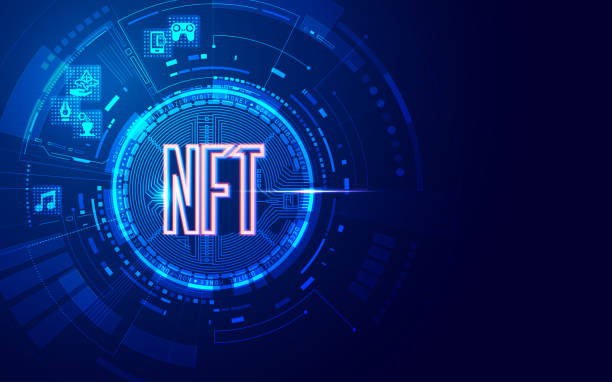
The increasing penetration of AI assistants has profound and multifaceted consequences for global economic and social structures. On one hand, this technology has immense potential for creating new economic value, increasing productivity, and fostering innovation.
On the other hand, it brings challenges and concerns regarding wealth distribution, job opportunities, and social changes that require careful examination.
In the economic sphere, AI assistants contribute to economic growth by automating routine tasks and increasing efficiency across various industries.
From smart production lines to automated customer services, this technology allows companies to provide better and faster services at lower costs.
This can lead to increased corporate profitability, reduced prices for goods and services, and consequently, increased consumer purchasing power.
Furthermore, the emergence of AI assistants can create new markets and lead to the development of innovative products and services that were previously not possible.
However, its impact on the labor market is a questionable and complex issue. While some jobs may be lost due to automation, new jobs are being created in areas such as the development, maintenance, and training of AI systems.
The main question is whether the rate of new job creation matches the rate of old job displacement, and whether the human workforce can quickly adapt to new skills? This issue requires extensive investment in workforce education and retraining and the establishment of social support systems.
Socially, AI assistants can improve people’s quality of life, for example, by facilitating access to information, assisting individuals with disabilities, and enhancing security.
However, there are also concerns, including reduced human interactions, increased loneliness, and the potential misuse of personal data for controlling or manipulating public opinion.
Also, the issue of digital inequality arises: Will all segments of society benefit equally from this technology, or will the gap between technology haves and have-nots deepen? The debate over AI ethics, algorithmic transparency, and accountability for decisions made by AI assistants is also of paramount importance.
How to manage these complex impacts and ensure that AI assistants benefit all humanity is one of the biggest challenges facing policymakers and the global community.
This technology is a double-edged sword that can both create unparalleled opportunities and bring significant risks.
Summary and Final Outlook: Smartening Life
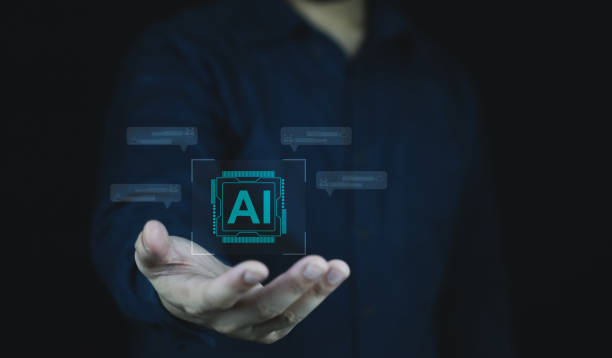
Throughout this article, we comprehensively examined various dimensions of AI assistants; from their initial introduction and daily applications to their pivotal role in work environments, ethical challenges, and future outlook.
As we have seen, AI assistants are no longer an abstract concept but have become a tangible and influential reality in our world.
These intelligent systems, with capabilities such as natural language processing, machine learning, and data analysis, have simplified our lives, increased productivity, and opened new avenues for interacting with technology.
From assisting with schedule management and answering general questions to automating business processes and providing deep analytical insights, AI assistants act as a powerful catalyst for change.
However, we emphasized that these advancements come with important considerations.
Data privacy, algorithmic biases, and the impact on the job market are among the challenges that require responsible approaches in the development and use of this technology.
Transparency, accountability, and the development of ethical and legal frameworks are crucial to ensure that AI assistants serve the benefit of the entire society.
The future of AI assistants is moving towards greater intelligence, proactivity, and deeper integration with various aspects of our lives.
It is expected that they will not only perform tasks but also anticipate our needs and interact with us in a more natural and human-like way.
This vision outlines a world where the AI assistant, as a smart collaborator and companion, not only helps us with our tasks but also enables us to reach new potentials.
Ultimately, it can be said that the AI assistant is a transformative technology with unparalleled potential to shape a smarter and more efficient future.
With a conscious and responsible approach, we can ensure that this technology becomes a tool for enhancing the quality of life and advancing humanity.
This journey is still at its beginning, and we are on the verge of discovering countless capabilities that AI assistants will bring us in the coming years.
Frequently Asked Questions
| Row | Question | Answer |
|---|---|---|
| 1 | What is an AI assistant? | A software program that performs tasks or services for an individual based on verbal or textual commands. |
| 2 | Name a few examples of AI assistants? | Siri, Google Assistant, Alexa, and Cortana. |
| 3 | How do AI assistants work? | They use Natural Language Processing (NLP), Machine Learning, and Artificial Intelligence to understand user input and provide responses or perform tasks. |
| 4 | What can an AI assistant do? | Answer questions, set reminders, play music, send messages, manage calendars, and control smart devices. |
| 5 | What are the benefits of using an AI assistant? | Increased productivity, quick access to information, assistance for individuals with specific disabilities, and simplification of daily tasks. |
| 6 | Are AI assistants’ answers always accurate? | No, they may sometimes make mistakes or provide outdated information, especially on complex or sensitive topics. |
| 7 | What are the privacy concerns regarding AI assistants? | Recording and storing audio/text data, potential for unauthorized access, and use of data for advertising purposes. |
| 8 | What will be the future of AI assistants? | Becoming smarter, greater integration with devices and platforms, deeper understanding of emotions, and ability to perform more complex tasks. |
| 9 | Do AI assistants learn from users? | Yes, through machine learning and collecting data from previous interactions to improve performance and personalize responses. |
| 10 | What is the difference between an AI assistant and a chatbot? | An AI assistant has the ability to perform a wider range of tasks beyond conversation and is often integrated with an operating system or hardware, while a chatbot is primarily designed for conversation or answering specific questions. |
And other services of Rasaweb Advertising Agency in the field of advertising
Smart UI/UX: A fast and efficient solution for digital branding with a focus on user experience customization.
Smart Sales Automation: A combination of creativity and technology for campaign management through dedicated programming.
Smart Website Development: A novel service for increasing website visits through precise audience targeting.
Smart Sales Automation: An effective tool to increase sales with the help of Google Ads management.
Smart Sales Automation: A creative platform for improving sales increase by optimizing key pages.
And over hundreds of other services in the field of internet advertising, advertising consulting, and organizational solutions
Internet Advertising | Advertising Strategy | Advertorial
Resources
AI on DigitoLatest AI News on ZoomitAI Articles on IRNAAI Analyses on ISNA
Rasaweb Afarin Digital Marketing Agency, by offering comprehensive and innovative solutions, paves the way for your business’s growth and brilliance in the digital world. From website design with a modern user interface and search engine optimization to targeted advertising campaigns, we are committed to building a bright future for your brand.
📍 Tehran, Mirdamad Street, next to Bank Markazi, Kazeroon Jonubi Alley, Ramin Alley, No. 6

